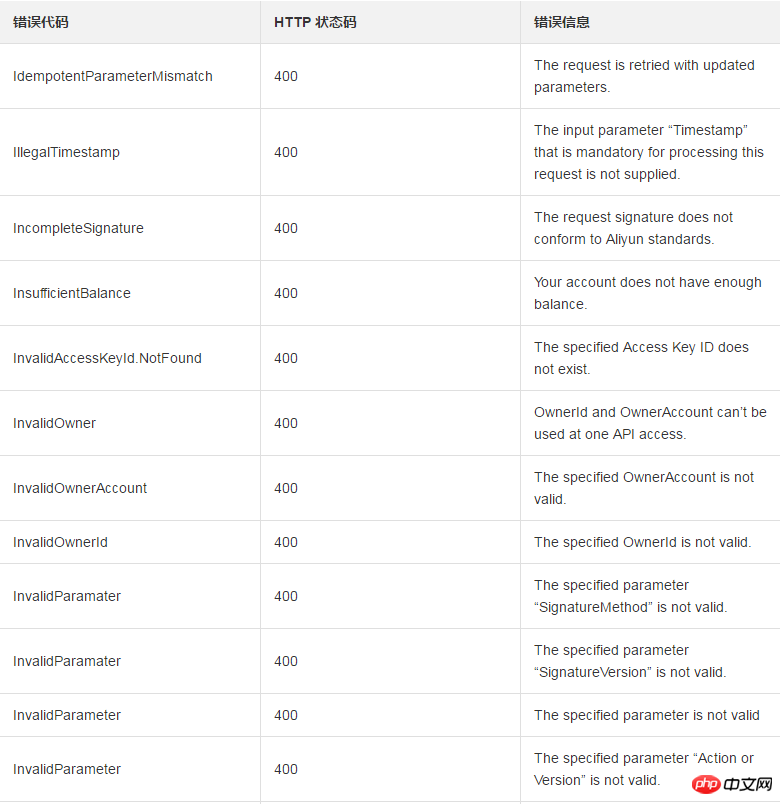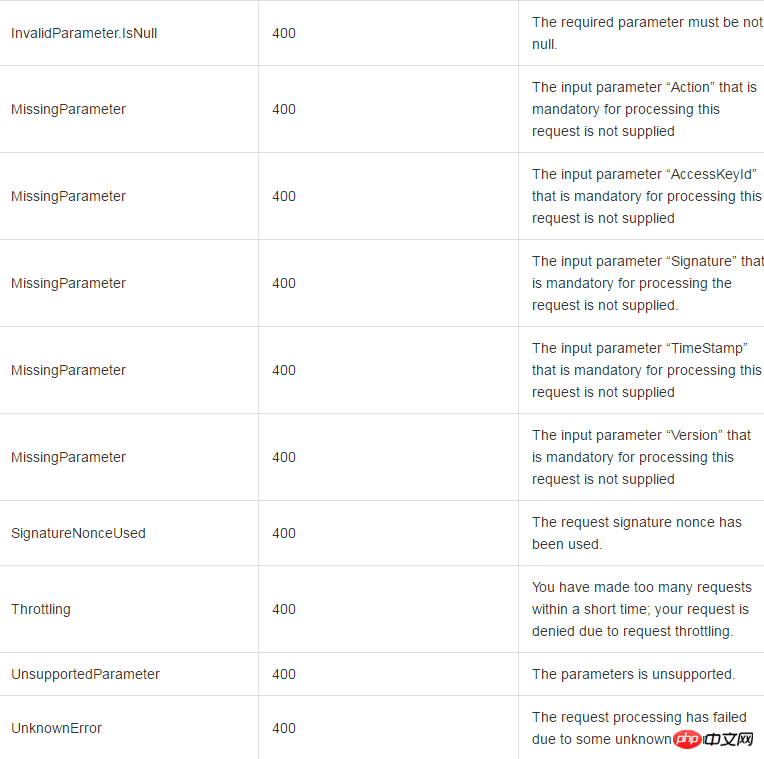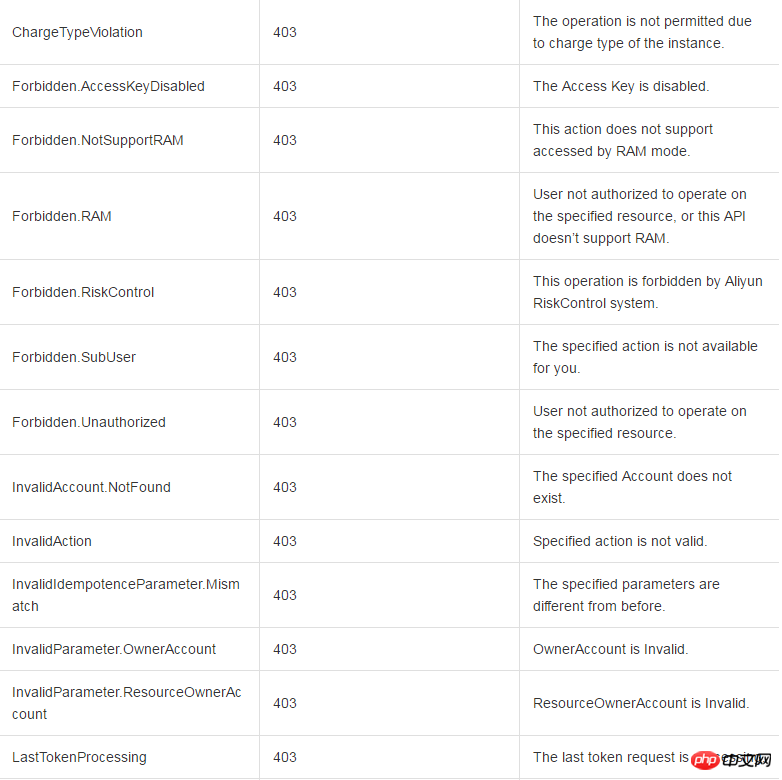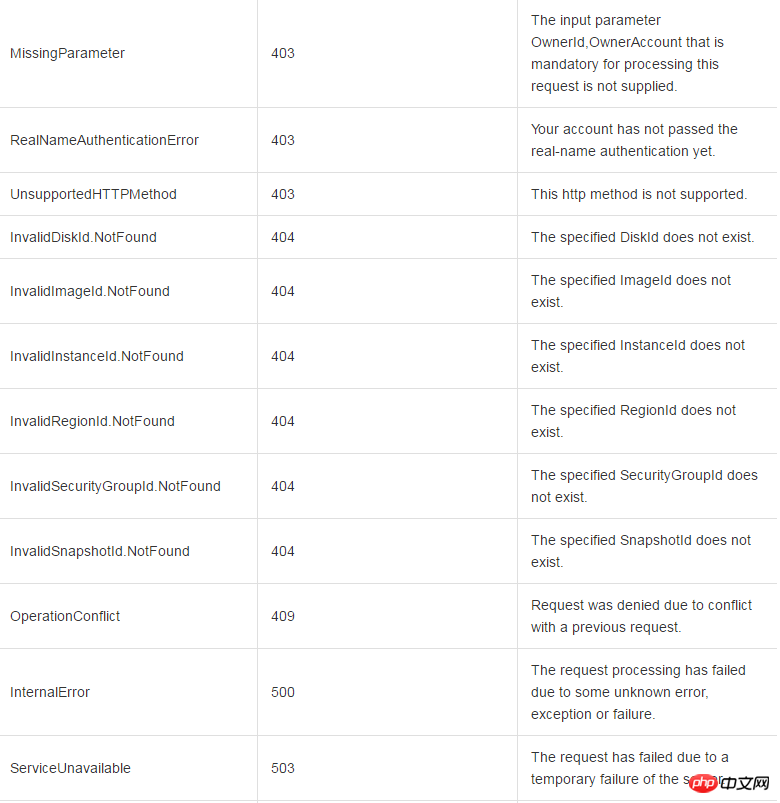 Operation and Maintenance
Operation and Maintenance
 Linux Operation and Maintenance
Linux Operation and Maintenance
 How to handle the returned results after calling the interface
How to handle the returned results after calling the interface
How to handle the returned results after calling the interface
This article introduces how to handle the returned results after the interface call, and focuses on the specific steps. The content of this article is very compact, and I hope you will study patiently.
Return results
The returned results are mainly in two formats: XML and JSON. The default is XML. You can specify the public request parameter Format to change the format of the returned results. See Public Parameters for more details. For ease of viewing and aesthetics, the API document return examples are all processed with line breaks and indentation, but the actual return results are not processed with line breaks and indentation.
Normal return example
After the interface is called successfully, the interface return parameters and request ID will be returned. We call such a return a normal return. The HTTP status code is 2xx.
XML example
<?xml version="1.0" encoding="UTF-8"?> <!--结果的根结点-->
<ActionResponse> <!--返回请求标签-->
<RequestId>4C467B38-3910-447D-87BC-AC049166F216</RequestId> <!--返回结果数据-->
</ActionResponse>JSON example
{
"RequestId": "4C467B38-3910-447D-87BC-AC049166F216" /* 返回结果数据 */
}Exception return example
After an error occurs in the interface call, the error code, error message and request ID will be returned. We call such return an exception return. HTTP status codes are 4xx or 5xx.
You can troubleshoot errors based on interface error codes, public error codes, and API Error Center. When you cannot troubleshoot the error, you can submit a work order to contact us, and indicate the service node HostId and RequestId in the work order.
XML Example
<?xml version="1.0" encoding="UTF-8"?><!--结果的根结点-->
<Error>
<RequestId>540CFF28-407A-40B5-B6A5-74Bxxxxxxxxx</RequestId> <!--请求 ID-->
<HostId>ecs.aliyuncs.com</HostId> <!--服务节点-->
<Code>MissingParameter.CommandId</Code> <!--错误码-->
<Message>The input parameter “CommandId” that is mandatory for processing this request is not supplied.</Message> <!--错误信息-->
</Error>JSON Example
{
"RequestId": "540CFF28-407A-40B5-B6A5-74Bxxxxxxxxx", /* 请求 ID */
"HostId": "ecs.aliyuncs.com", /* 服务节点 */
"Code": "MissingParameter.CommandId", /* 错误码 */
"Message": "The input parameter “CommandId” that is mandatory for processing this request is not supplied." /* 错误信息 */
}Public Error Code



 ##
##
The above is the detailed content of How to handle the returned results after calling the interface. For more information, please follow other related articles on the PHP Chinese website!

Hot AI Tools

Undresser.AI Undress
AI-powered app for creating realistic nude photos

AI Clothes Remover
Online AI tool for removing clothes from photos.

Undress AI Tool
Undress images for free

Clothoff.io
AI clothes remover

Video Face Swap
Swap faces in any video effortlessly with our completely free AI face swap tool!

Hot Article

Hot Tools

Notepad++7.3.1
Easy-to-use and free code editor

SublimeText3 Chinese version
Chinese version, very easy to use

Zend Studio 13.0.1
Powerful PHP integrated development environment

Dreamweaver CS6
Visual web development tools

SublimeText3 Mac version
God-level code editing software (SublimeText3)

Hot Topics
 1662
1662
 14
14
 1419
1419
 52
52
 1311
1311
 25
25
 1261
1261
 29
29
 1234
1234
 24
24
 Linux Architecture: Unveiling the 5 Basic Components
Apr 20, 2025 am 12:04 AM
Linux Architecture: Unveiling the 5 Basic Components
Apr 20, 2025 am 12:04 AM
The five basic components of the Linux system are: 1. Kernel, 2. System library, 3. System utilities, 4. Graphical user interface, 5. Applications. The kernel manages hardware resources, the system library provides precompiled functions, system utilities are used for system management, the GUI provides visual interaction, and applications use these components to implement functions.
 vscode terminal usage tutorial
Apr 15, 2025 pm 10:09 PM
vscode terminal usage tutorial
Apr 15, 2025 pm 10:09 PM
vscode built-in terminal is a development tool that allows running commands and scripts within the editor to simplify the development process. How to use vscode terminal: Open the terminal with the shortcut key (Ctrl/Cmd). Enter a command or run the script. Use hotkeys (such as Ctrl L to clear the terminal). Change the working directory (such as the cd command). Advanced features include debug mode, automatic code snippet completion, and interactive command history.
 How to check the warehouse address of git
Apr 17, 2025 pm 01:54 PM
How to check the warehouse address of git
Apr 17, 2025 pm 01:54 PM
To view the Git repository address, perform the following steps: 1. Open the command line and navigate to the repository directory; 2. Run the "git remote -v" command; 3. View the repository name in the output and its corresponding address.
 vscode Previous Next Shortcut Key
Apr 15, 2025 pm 10:51 PM
vscode Previous Next Shortcut Key
Apr 15, 2025 pm 10:51 PM
VS Code One-step/Next step shortcut key usage: One-step (backward): Windows/Linux: Ctrl ←; macOS: Cmd ←Next step (forward): Windows/Linux: Ctrl →; macOS: Cmd →
 What is the main purpose of Linux?
Apr 16, 2025 am 12:19 AM
What is the main purpose of Linux?
Apr 16, 2025 am 12:19 AM
The main uses of Linux include: 1. Server operating system, 2. Embedded system, 3. Desktop operating system, 4. Development and testing environment. Linux excels in these areas, providing stability, security and efficient development tools.
 How to run java code in notepad
Apr 16, 2025 pm 07:39 PM
How to run java code in notepad
Apr 16, 2025 pm 07:39 PM
Although Notepad cannot run Java code directly, it can be achieved by using other tools: using the command line compiler (javac) to generate a bytecode file (filename.class). Use the Java interpreter (java) to interpret bytecode, execute the code, and output the result.
 How to run sublime after writing the code
Apr 16, 2025 am 08:51 AM
How to run sublime after writing the code
Apr 16, 2025 am 08:51 AM
There are six ways to run code in Sublime: through hotkeys, menus, build systems, command lines, set default build systems, and custom build commands, and run individual files/projects by right-clicking on projects/files. The build system availability depends on the installation of Sublime Text.
 laravel installation code
Apr 18, 2025 pm 12:30 PM
laravel installation code
Apr 18, 2025 pm 12:30 PM
To install Laravel, follow these steps in sequence: Install Composer (for macOS/Linux and Windows) Install Laravel Installer Create a new project Start Service Access Application (URL: http://127.0.0.1:8000) Set up the database connection (if required)



